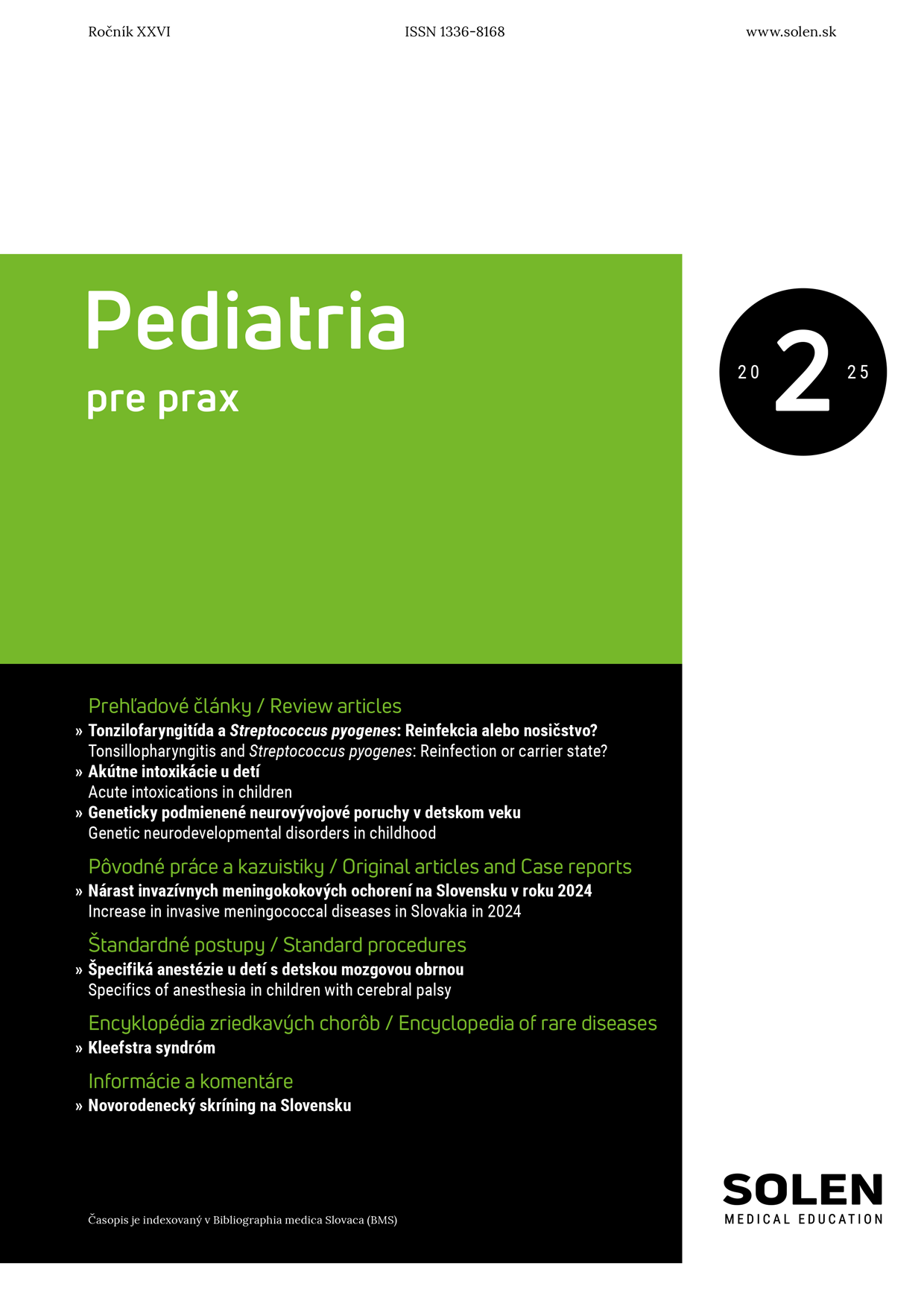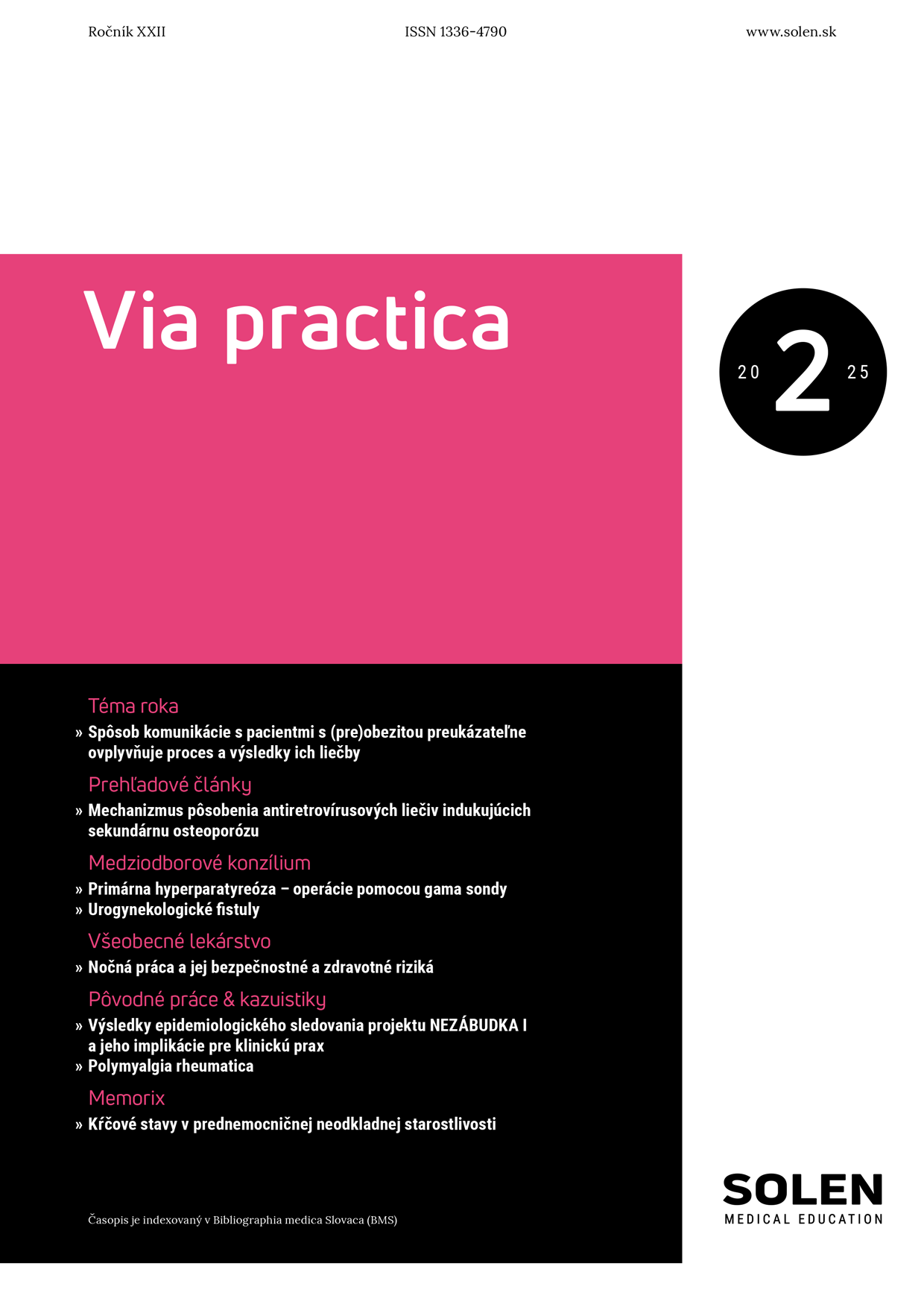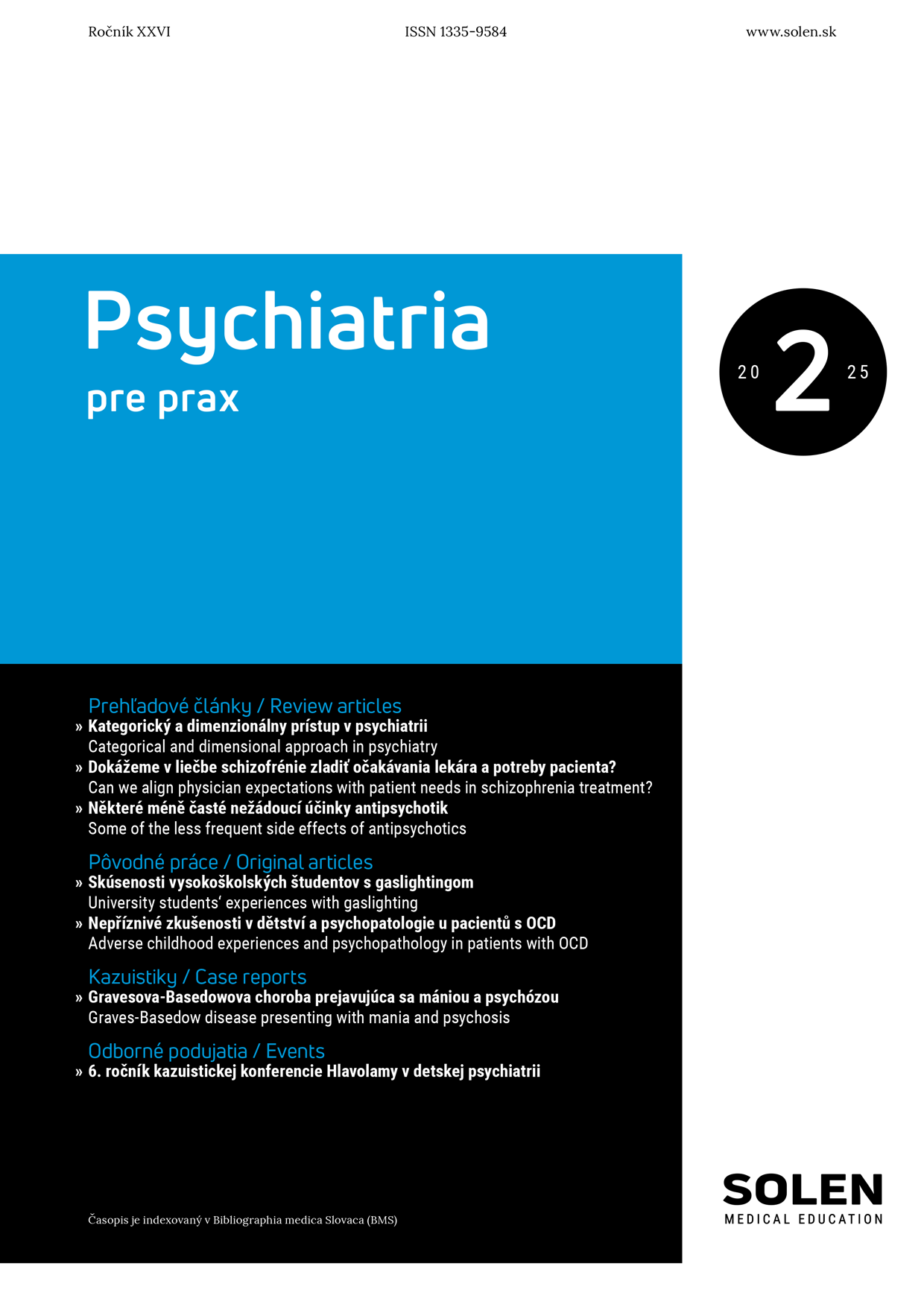Neurológia pre prax 2/2017
Poruchy vědomí
MUDr. Roman Havlíček, MUDr. Martin Voldřich, Ph.D.
Poruchy vědomí doprovázejí širokou škálu onemocnění, pokrývající téměř všechny obory medicíny. I přes rozdílnou etiologii bychom měli v prvním kontaktu s pacientem respektovat standardizovaný diagnostický postup, který pokryje a odliší nejzávažnější stavy. U méně závažných máme k dalšímu vyšetření více času. Do této skupiny patří onemocnění, u nichž příčinu pomůže odhalit až podrobná anamnéza a další cílené testy. Hranici mezi postupy urgentní medicíny a observací určuje v první řadě stabilita nemocného. Článek si neklade za cíl opakovat problematiku anatomie, fyziologie či detaily neurologického vyšetření. Má spíše s nadhledem upozornit lékaře, že navzdory příčině, jenž poruchu vědomí vyvolala, jsou první kroky těmi, které rozhodují o přežití našich pacientů.
Kľúčové slová: amence, delirium, lucidita, obnubilace, porucha vědomí, vigilita, ABCDE algoritmus, Glasgow coma scale
Disorders of consciousness
Disorders of consciousness accompany a wide range of diseases, involving almost all branches of medicine. Despite different etiology, in the first contact with the patient we should follow a standardized diagnostic approach in order to distinguish the acutest cases. In less serious cases we have more time for diagnostics – detailed medical history and further investigations help us to discover the cause of the problem. The border between the urgent medicine procedures and observation are defined by the stability of the patient. The aim of this article is not to give a review of anatomy, physiology and neurological examination. It should rather inform the clinician that even though the differential diagnosis can be initially wide, the first steps of diagnostic and therapeutic process determine the patient's survival.
Keywords: confusion, delirium, lucidity, obnubilation, disorders of consciousness, vigilance, ABCDE algorithm, Glasgow coma scale





-1.png)











